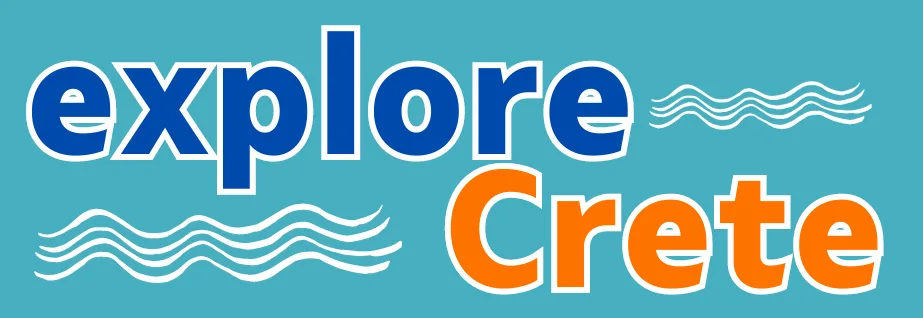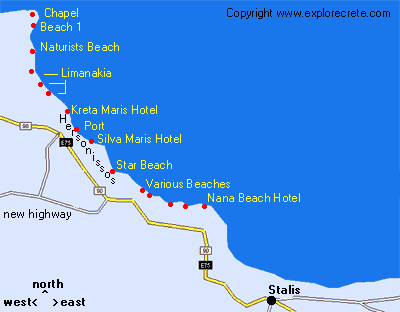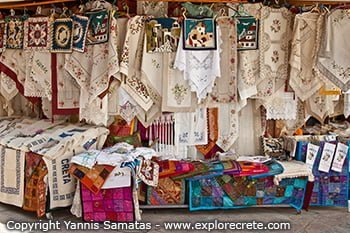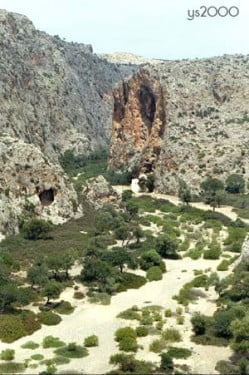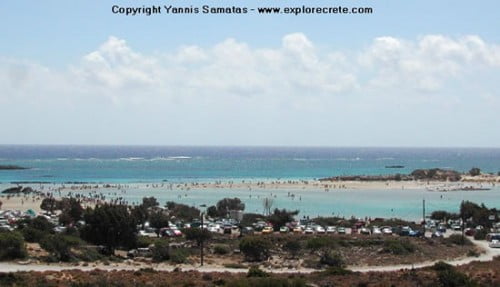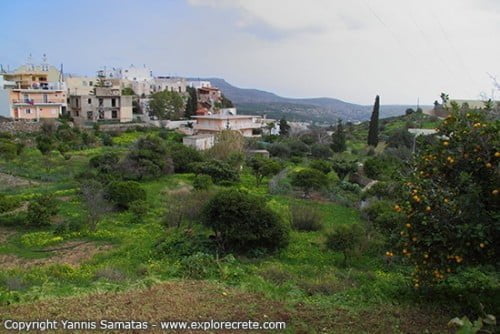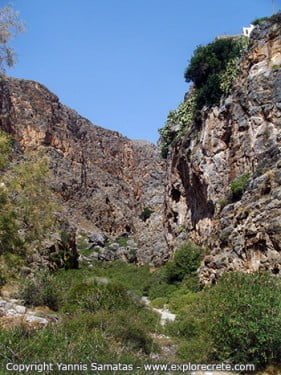Samaria Gorge in Crete
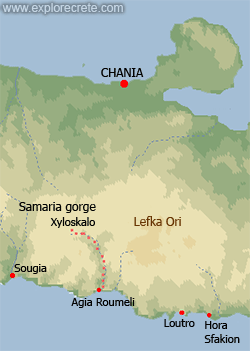
Samaria Gorge is one of the main sights of Crete. Every tourist who visits Crete will have heard of this beautiful gorge or soon will. The locals call it the “Farangas” or “Great Gorge”, both in admiration at its beauty and to differentiate it from the many other, smaller gorges of Crete.
The Samaria Gorge is in west Crete in the White Mountains range. It is the longest gorge in Europe, with a length of 18 kilometres.
The gorge starts at Xyloskalo (1227 m. above sea level) on the Omalos Plateau and runs down to the seaside village of Agia Roumeli on the south coast of Crete.
Flora and Fauna in Samaria Gorge
The Samaria National Park is exceptionally rich in plant and animal life. In the gorge you will find unique species protected under international law.
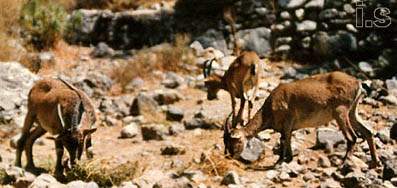
It is said that there are 450 plant species in the gorge, and not a single flower may be removed from Samaria, by law. Don’t see this as a pointlessly strict rule, but as the only way to protect the delicate ecosystem of Samaria so that thousands of visitors can continue to enjoy it each year.
In Samaria you can admire the forests of huge pine and cypress trees, a picture from Crete’s past, when the island was covered by forests famous for their timber, ideal for building strong ships.
Inside the gorge you may even meet its famous inhabitants, the wild goats of Crete, which the locals call “agrimia” and tourists call “kri-kri”.
The Cretan wild goat is endemic to Crete and you will probably see some in the village of Samaria, as they often approach the houses at the edge of the village.
The Samaria village
Samaria is an old village whose inhabitants were relocated in 1962 when the gorge was declared a national park.
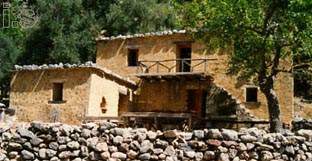
The old houses still exist and they serve as houses for the guards. The village is a good opportunity to see the traditional architecture and rest for a while.
When you get to this point you are almost halfway and the time is perfect for a sandwich (if you are carrying any with you).
A little further down from the village is the 14th-century church of Osia Maria (Holy Mary), from which the name “Samaria” is derived.
Hiking tips and equipment
Τhe Samaria footpath is very well signposted all along its length and is thought to be the most-walked footpath in the whole of Greece (the second is the Mount Olympus path).
It is impossible to get lost, as you are always moving in a stream of people. There are drinking water springs and toilets at various points.
When you buy your ticket, you will find a map of the gorge printed on the back side.
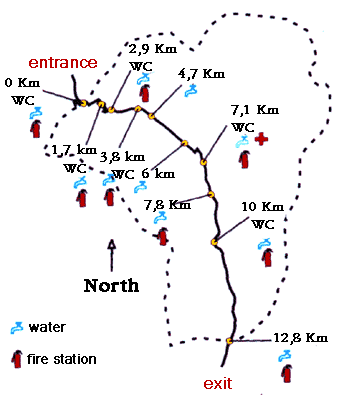
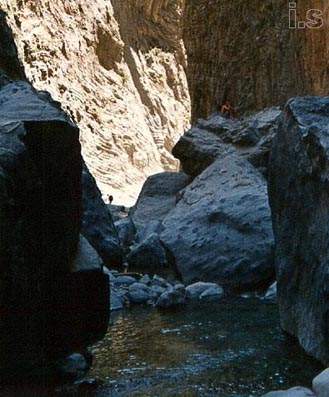
Samaria is not a simple stroll for those unused to walking. Anyone can go down the gorge, as long as they have no serious medical problems, but you must be prepared for very stiff legs the next couple of days.
A good pair of hiking shoes is a must, as well as sunblock and a hat.
The most tiring part of the walk is the last 3 km before the exit from the National Park. Here there is often another ticket control to make sure no-one is left in the gorge overnight, either because they have had an accident or because they want to.
The landscape at the exit from the gorge is dry and arid with no shade. If you have started your walk in the early morning, you will reach this point in the early afternoon, when the heat of the day is more obvious. Be patient though, because just another hour’s walk away is Agia Roumeli with its inviting beach.
Agia Roumeli
At Agia Roumeli you can take the ferry either to Loutro and Hora Sfakion, or to Sougia and Paliochora.
Unfortunately Agia Roumeli, like other busy tourist resorts, is full of “kamakia”, annoyingly persistent people who try to persuade you to choose their taverna. Just ignore them.
If you’re not in a hurry to get back to your hotel or home, you can stay in Agia Roumeli at one of the apartments there.
You must remember that Agia Roumeli is transformed when the last boat leaves. Suddenly everything is peaceful and you discover the real beauty of the place. Enjoy the sunset on the beach, a good meal at one of the tavernas, a chat with the taverna owner and the stars filling the night sky. Don’t be in a hurry to leave in the morning. Take the path up to the fortress high above Agia Roumeli and enjoy the magical view.
The long way or the lazy way
The walk through the Samaria Gorge takes 4-8 hours depending on your pace. Six hours is the normal time, especially if you stop to take pictures and enjoy the amazing natural landscape.
However, if you don’t feel up to the whole route, there is also the “lazy way”, as the tour agents call it.
This is a much shorter route from Agia Roumeli up to the “Iron Gates” (Sideroportes), the narrowest point of the gorge.
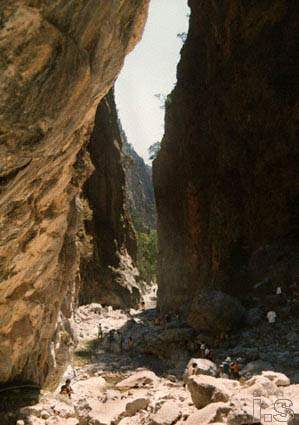
At the Iron Gates, the gorge is so narrow that you can almost touch both sides as they rise up sheer 350 metres above your head.
The short route is certainly an easy way to experience some, though not all, of the magic of the Samaria Gorge.
The gorge is open from the end of April to mid-October
There is a cheap ticket to enter the gorge, which is open from the last week of April to mid-October. However, the opening and closing dates depend on the weather conditions and may vary slightly for each year.
A downpour may force the people in charge to forbid entry to the gorge, to avoid accidents due to rockfalls or flooding of the stream running through the bottom of the gorge.
You should also be aware that when there is a strong wind blowing, the little boats to and from Agia Roumeli may not be allowed to sail, so you’ll have to wait until conditions improve. This usually happens in the autumn.
Use this telephone number +30 2821045570 or send an email to [email protected] for more info.
How much does it cost to visit Samaria gorge?
- You will need to buy a ticket to enter the gorge. The cost is 5 € (2014).
- The bus ticket from Chania to Xyloskalo in Omalos Plateau costs 7 €.
- The ferry ticket from Agia Roumeli to Chora Sfakion costs 10 €.
- The bus ticket from Chora Sfakion to Chania costs 7 €.
- The total cost per person is approximately 30 €.
* All prices were valid in 2014.
Read more:
© explorecrete.com All Rights Reserved. Reproduction or copying without permission is prohibited.
